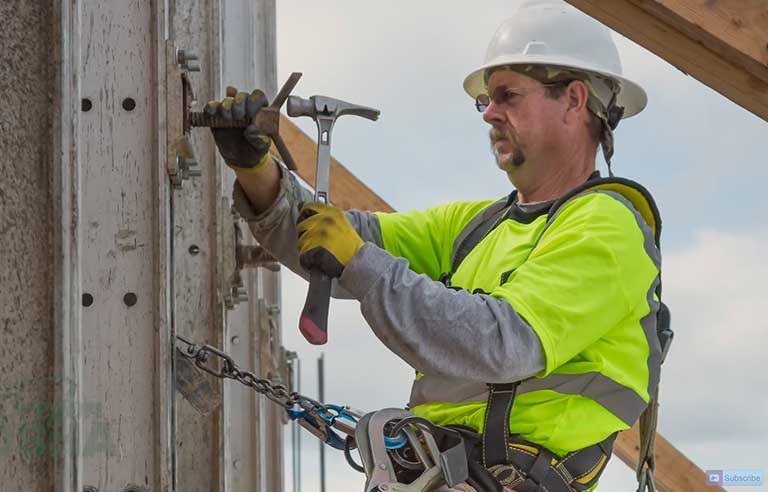Fall protection in construction: Oregon OSHA launches free online training

Salem, OR — A new online video training course developed by Oregon OSHA is intended to help employers and workers in the construction industry meet the requirements of the agency’s fall protection standards.
The free course features insights from industry leaders, along with practical demonstrations, a review of relevant requirements, and a discussion of terms and processes related to fall protection in the industry. It includes information about the purposes of fall arrest and fall restraint systems, fall clearance calculations, scaffolding, guardrails, leading-edge work, and holes and openings.
According to the Bureau of Labor Statistics, falls are the leading cause of death in construction. In 2016, BLS reported 370 fatal falls to a lower level in the private construction industry. That was up from 255 in 2011 – a 45% increase. In fiscal year 2019, Fall Protection – General Requirements (1926.501) was the standard most frequently cited by federal OSHA. That marks the ninth consecutive year the standard has been No. 1 on the agency’s “Top 10” list.
Oregon OSHA – which operates under federal OSHA’s State Plan program – reports that from 2014 to 2018 it had 6,187 accepted disability claims in construction because of falls to a lower level.
The video training is the fourth course in Oregon OSHA’s Fall Protection Suite, which examines fall hazards across industries and in various on-the-job situations.
“This new course reflects Oregon OSHA’s ongoing commitment to expand our educational offerings in a way that fits the busy schedule of employers and workers, and that helps them maintain safe workplaces,” Roy Kroker, consultation and public education manager for Oregon OSHA, said in the release.
Post a comment to this article
Safety+Health welcomes comments that promote respectful dialogue. Please stay on topic. Comments that contain personal attacks, profanity or abusive language – or those aggressively promoting products or services – will be removed. We reserve the right to determine which comments violate our comment policy. (Anonymous comments are welcome; merely skip the “name” field in the comment box. An email address is required but will not be included with your comment.)

